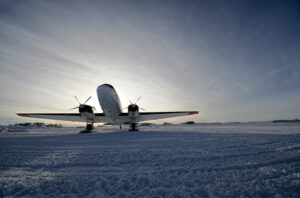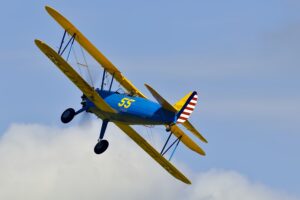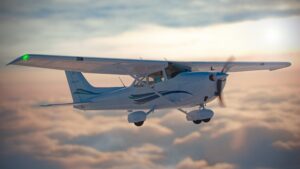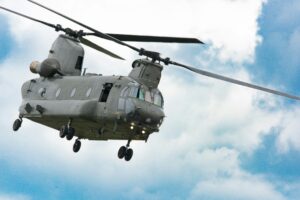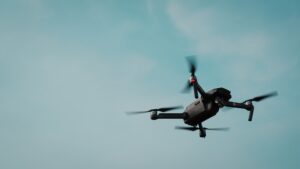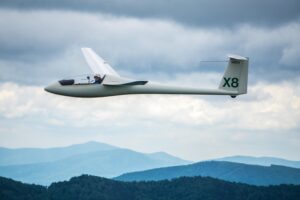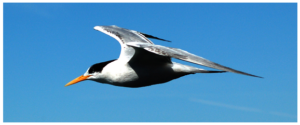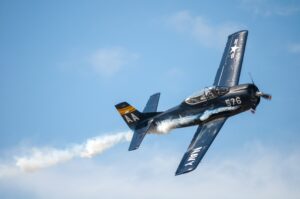Introduction – Lift and Myths
A few notes regarding this website.
- This website’s sole purpose is education. The authors cover all costs, and we receive no outside support. Third parties created some of the graphics and photographs used on this website. We’ve done our best to provide attribution when possible. Creators of the unattributed items can contact us so that we may give proper attribution.
- We would gladly consider any constructive suggestions to improve the information presented. To do so, use the Contact Us page.
- Website content last edited: November 21, 2025.
- The website is best viewed on a laptop/desktop, tablet, or landscape-oriented smartphone.
- About Us: David Anderson is a physicist, private pilot, and co-author of Understanding Flight. Scott Eberhardt is Ph D. Aeronautical Engineer, pilot, and co-author of Understanding Flight. Scott Snider is a Certificated Flight Instructor (CFI).
This site is dedicated to replacing the all-too-common myths and misunderstandings about the physics of flight, e.g., lift. By highlighting why these erroneous beliefs are wrong and explaining the truth, we hope to rid aviation of these false beliefs once and for all. Many who see this site for the first time may think we’ve lost our minds. No one likes to be told that they have been worshiping a false god, and publications are more than a little reluctant to break the news. Here we present the principles of lift and flight as easily and intuitively as possible.
This is not just another attempt to understand flight. Here you will find many true and carefully explained, but shocking to some, ideas. Let’s list a few to get the ball rolling.
- The Bernoulli equation has no application other than in a confined space like a pipe. It has no application to flight, a ping pong ball confined in a jet of air, a curve ball, an atomizer, or a hurricane taking off a roof.
- Unconfined flowing air will always have the same static pressure as the environment. No “magic” membrane separates the two bodies of air.
- The shape of the wing has a lot to do with efficiency at cruise and stall characteristics, but nothing to do with lift. Any wing can fly upside down just fine.
- Neglecting turbulence, all airplanes fly in still air. That is why ground speed and direction seldom agree with airspeed and heading.
- The wing moves through the still air in flight. This is important to understand because most explanations of lift state that the air flows over the wing, i.e, the wing is still.
- The wing accelerates air straight down rather than at a slight angle, as is portrayed in the graphics found in many books. The Wright brothers developed the modern propeller by realizing that a propeller is a rotating wing.
- Wingtip vortices are just a red herring. They contain almost no energy and do not affect flight. It is the wing-sheet vortices that are the heavy lifters.
- Winglets are put on wings to change the lift distribution, not to reduce the little energy in wingtip vortices.
- A one metric ton airplane accelerating air down at 3m/s is accelerating over 3 tons of air per second per Newton’s 2nd law.
- The rotating spiral propeller slipstream is a myth violating Newton’s 1st and 3rd laws. Also, the drawings always have the spiral going in the wrong direction.
- The lift on any wing is given by Figure 1. The effective angle of attack is measured from the orientation of the wing with zero lift.
At the end of the 19th century and the beginning of flight, a misunderstanding of the fundamental physics of flight was born and accepted. Because this allowed an easy explanation of flight, though wrong, it became dogma. Now, decades later, legions of people interested in flying (including flight instructors!) learned the associated myths and misunderstandings from books (including FAA pilot training handbooks), webinars, seminars, and courses. As a result, myths and misunderstandings gained the status of absolute truths even though fundamental physics and careful observation prove otherwise.
From the beginning of flight well over 100 years ago, there have been arguments over two hypotheses of flight: Bernoulli and Newton. The Bernoulli explanation of flight depends on 1) the shape of the wing and 2) lower pressure on top of the wing due to faster-moving air. An additional condition never mentioned is that no energy is added or subtracted from the system since the Bernoulli equation is a statement of the conservation of energy. You will learn that these criteria are not met in lift.
In the correct Newtonian explanation, the air is accelerated perpendicular to a wing’s direction of motion. That is, straight down in straight-and-level flight. This contrasts with the depiction in many books of air flowing off the wing at a slight angle. For those who are curious why we state the “correct” Newtonian explanation, there are incorrect attempts at explaining lift using Newton’s laws of motion. We address the problem with these hypotheses further down this webpage.
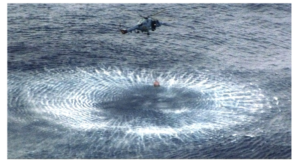
Wings, rotors on helicopters, and propellers are all force-producing devices obeying the same fundamental physics. The helicopter hovering over the water in Figure 2 demonstrates that air is accelerated straight down to produce lift. An aircraft’s wing, helicopter rotor, propeller, and ceiling fan accelerate air perpendicular to their plane of motion and are all legitimate wings. The Wright brothers developed the modern propeller by realizing that a propeller is just a rotating wing. They knew how wings produced lift.
For the physics of flight, there are many so-called “solutions”, though “plausible falsehoods” would be a better term. Powered flight has existed for over a century, and yet there is only confusion and false information concerning what should be a simple freshman physics topic. Lift is a solid surface moving through air, producing an upward force. This is not rocket science. But after all this time, we are still fighting over how lift is produced. Scientific American magazine published an article entitled “No One Can Explain Why Planes Stay in the Air” [1]. Flying magazine published an article entitled “You Will Never Understand Lift” [2].
Many people know that what is taught is wrong, and some of the falsehoods are merely attempts to find a correct explanation of flight. The mere fact that there are so many contradicting “solutions” to a simple phenomenon is a clear indication that there is something very wrong with how the problem has been approached. Some examples of these creative yet wrong solutions are:
- Circulation theory with its “bound vortex”. In effect, the wing flies in its upwash, which is like lifting oneself by their bootstraps. This explanation implies or states that lift does not require work (oh yes it does!) and that the energy loss is due to the wingtip vortices.
- Then there is the Shape of the Wing myth. This hypothesis states that a wing must have a bulge on the top, called a camber. Because of the bogus equal transit time hypothesis (or no explanation at all), the statement is made that air must flow faster over the top of the wing. Then the Bernoulli equation is inappropriately invoked, which implies that the faster-moving air must have a lower pressure, producing the lift.
- There are numerous wrong attempts to invoke Newton’s Laws of Motion.
- Some stated that lift is produced by air striking the bottom of the wing. No, sorry, try again. Using conservative estimates, an aircraft in cruise flight would only produce about 3% of the required lift by this process. Plus, it would create very high drag. So, you get very little lift and lots of drag. That isn’t a winning combination for an aircraft.
- Another one is that air is compressed under the wing, raising the pressure, and that holds the airplane up.
- A perennial favorite is that a wing “surfs” the air like a surfboard on water. Hmmm, that’s a density and displacement issue, actually.
- How about this one? Some people “know beyond the shadow of a doubt” that the back of the propeller hits the air, thereby pushing the airplane forward. A propeller (or the blade of a ceiling fan) is angled. If the back of the propeller hit the air, the air would be pushed outward. The result would be the air forming a cone shape. However, we know that a propeller accelerates air perpendicular to the plane of rotation and not with an outward motion. You can test this by standing behind a room fan or under a ceiling fan. Once you move beyond the fan blades’ diameter, you won’t feel any wind.
- People can be quite imaginative, even though the result is just another misconception.
- Have you heard of the half-venturi explanation of lift? It’s like clapping with one hand.
Sometimes the Bernoulli explanation is applied to normal flight and the “Newtonian” explanation to inverted flight. Other times, they are both used at the same time. Ugh! (Kind of like what Will Rodgers said about Near Beer, a prohibition-era non-alcoholic beer: “Whoever named it was wrong twice”.)
A variation we’ve heard is that Bernoulli causes lift at low angles of attack and Newton is responsible for lift at high angles of attack. You need to give folks credit for creativity, no matter how displaced their explanation is from reality! It seems to show people want answers. Well, we can provide a correct, complete, physics-based answer.
Of course, there are variations on the myths listed above. We’ll restrain ourselves from entertaining you with more lift myths. At least for now.
Another sign that there is a problem with these hypotheses is that none provide useful tools for understanding the physics of flight. However, once the actual physics is understood, many phenomena of real flight are easy to explain. The hypotheses noted above are not able to do so without adding additional physics and/or wholly contradicting themselves with pseudo-physics. Some examples that the above falsehoods have trouble explaining are:
- How does an airplane fly upside down with asymmetric wings?
- How does a wing correct for changes in load, speed, and air density?
- Where is the work performed? (Clearly, the range of an airplane depends on the load.)
- How can a Bumble Bee fly? Many of us have been taught that they shouldn’t be able to fly.
- How can a hummingbird fly backward?
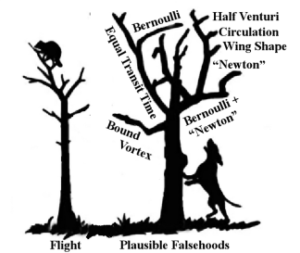
As illustrated by the hovering helicopter, the problem with the incorrect hypothesis is that, like that of the hound in Figure 3, we’ve been barking up the wrong tree.
Wind tunnel videos and graphics found in books, magazine articles, webinars, seminars, etc. have taught us to look at the wing as stationary with air flowing over it. The problem with this starting point is that the physics of lift is hidden by the high-velocity air flowing over the wing in a wind tunnel. In reality, neglecting turbulence, the aircraft becomes part of the moving air mass and is flying in still air. Thus, air above the wing is accelerated straight down to produce a lift force straight up rather than flowing off the wing at a slight angle as depicted in many books.
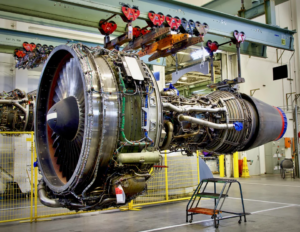
We present a concise list of the concepts that have handicapped the correct understanding of lift.
1. We are taught to use the Bernoulli Principle – a handy “tool” – that faster-moving air has a lower pressure. We will show you that unconfined air has the same pressure as the surrounding environment, independent of the speed.
2. We are taught to neglect the work performed in producing lift. However, one will see that the real physics of flight is tied to the power requirement to produce lift. There is a reason that big airplanes need big engines (Figure 4) and gliders continually descend in the air mass (even when the air mass is rising as in a thermal), exchanging altitude for energy.
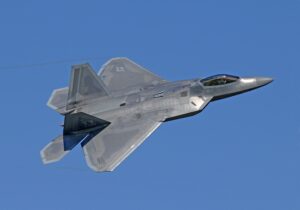
3. We are taught that lift depends on the shape of the wing, but we will show that in principle, any wing can fly upside down.
A barn door can be made to fly. Figure 5 shows an F-22 that has flat wings like a barn door.
4. We are taught to look at the wing as stationary with air flowing over it. This perspective gets one starting off on the wrong foot because the physics are hidden by the fast-moving air. In the early days of flight, the high-speed component of the data was first removed.
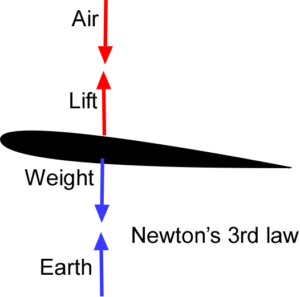
5. We are only presented with the forces of lift and weight. Lift and weight are equal only in level flight. It’s assumed that they are the force pair referred to by Newton’s third law, which states that forces come in equal and opposite pairs on paired objects. The force paired with weight is the pull the wing puts on the Earth, like the pull of the Earth and the moon. The paired force with lift is a force on the air. These forces are shown in Figure 6.
6. We are taught that faster-moving air means lower pressure. This is not true for most cases.
If you’re interested in why we developed this website, click this link Why Bother.
For an interesting article on why false beliefs continue and often gain strength click here.
When challenged, true believers often go on the defensive. Instead of opening their mind to a possible new understanding, they try to defend their “truth”. When that comes up empty, they often attack the person rather than their ideas or just conclude that the subject isn’t important. Thus, the statement that science progresses one funeral at a time.
If, after studying this website’s content, you continue to believe in your understanding and dispute what we’ve presented, write a civil response based on physics and send it to us via our Contact Page. We look forward to hearing from you.
So, enjoy exploring the articles and learning the truth.
References:
(1) Ed Regis, No One Can Explain Why Planes Stay in the Air, Scientific American February 1, 2020.
(2) Peter Garrison, You Will Never Understand Lift, FLYING Magazine, June 4, 2012.
